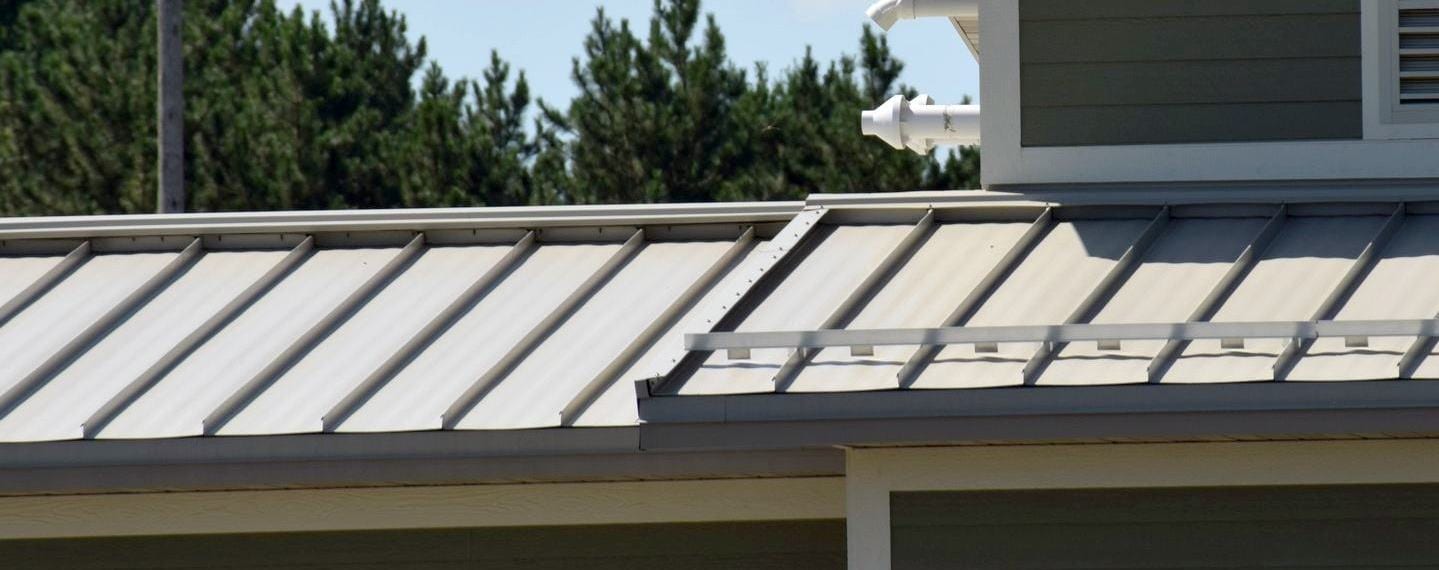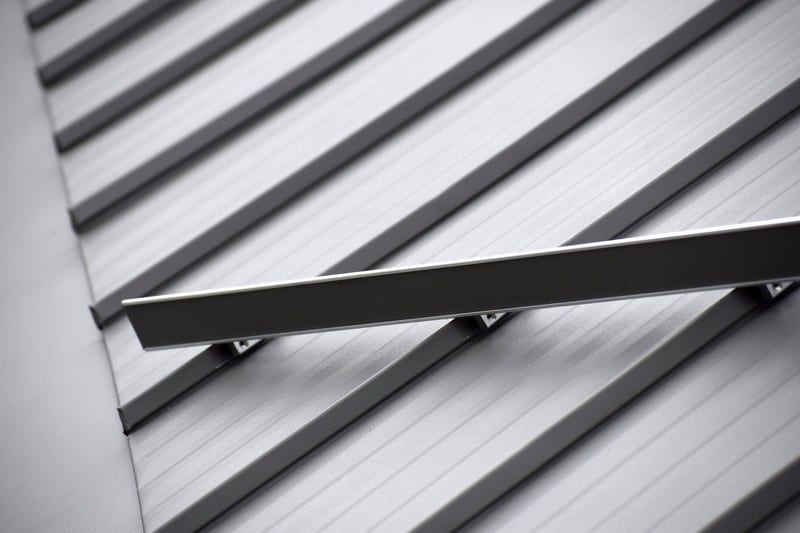Standing seam roofing panels are able to resist many different kinds of weather-related challenges, such as fire, hurricanes and salty air. In this column, we discuss the different types of metal roofing fastening systems—a very important topic that involves economics, aesthetics and maintenance.
Exposed vs. Concealed Fastener Metal Roofing
The two most common ways of attaching a metal roof to a structure are exposed fasteners and concealed fasteners. Exposed fastener panels use a screw or nail to secure the metal roofing to the roof decking or purlins where the nail or screw actually penetrates an area where two panels overlap. This can involve hundreds and even thousands of fasteners, with the head on the outside of the panel, exposed to weather. These fasteners must be spaced and driven into the materials to maintain the integrity of rubber grommets (under the fastener head) which serve to prevent precipitation from gaining access through each fastener’s hole.
Conversely, concealed clip fastener panels (i.e. “Standing Seam Roofing”) use a system where the fasteners are driven through the clips into the roof deck with no connection or piercing of the metal panels. The clip and fasteners are concealed beneath the standing seam panel material. The panel is then laid over and attached to the clips, before finally being mechanically or hand locked to the clips.
Benefits of Exposed Fastener Panels
Granted, exposed fastener metal roofing panels are a less expensive alternative (and much faster to install) than concealed fastener standing seam roofing panelss. They work best in simple roofs like gables or shed roofs but get difficult to work with on structures with dormers, valleys and complex architectural features. While they have been overwhelmingly popular for certain styles of buildings for decades, exposed fastener roofs do have shorter warranty timeframes than concealed fastener systems.
Problems can occur if fasteners are driven too tight by a contractor or installer. Because metal expands and contracts with temperature change, screws driven too tight leave no room for expansion and contraction.
In contrast, a concealed fastener system (standing seam roofing) is driven through the clip and not the panel itself. This is designed to give the panel flexibility for movement. Further, the concealed fasteners are never exposed to weather precipitation, and are insulated from movement.
How Cost is determined in both Standing Seam Roofing and Exposed Fastener Systems
A concealed fastener system is more expensive due to the specialized craftsmanship required, and time it takes to install the hidden fasteners. The simple fact that there aren’t hundreds or thousands of tiny holes in your roof (i.e. exposed fastener panels installed with screws directly through the panel) you have an aesthetically smooth surface broken only by the seams which give the concealed fastener system (standing seam roofing system) its elegance.
Because of this aesthetic appearance, concealed systems are seen largely on residential and commercial structures, while the exposed fastener system is more likely to be found on large industrial, commercial and agricultural buildings.
Some building owners will tell you that their exposed fastener roofing system has stood up to precipitation and UV light from the sun for years. That’s great news, but keep in mind that eventually the screws will randomly back out on their own, due to wind and weather.
The result will be time spent to re-tighten or replace the screws’ grommets. It’s important that they are still making snug contact to the panel, and that the wood substrate directly under the panel is free of any dampness. The best way to avoid this situation is to install a Concealed Fastener Standing Seam Roofing System.
Contact the team at All American Steel today, or visit our panel display inside All American Do it Center stores, in Tomah, Sparta or Richland Center Wisconsin.



